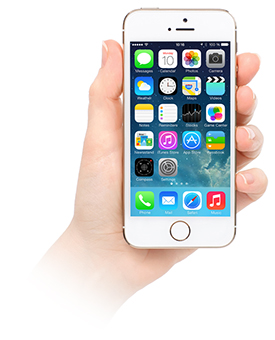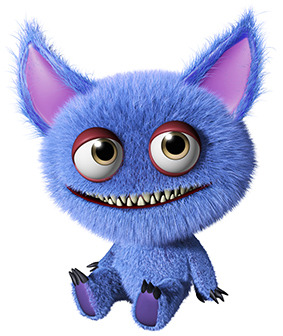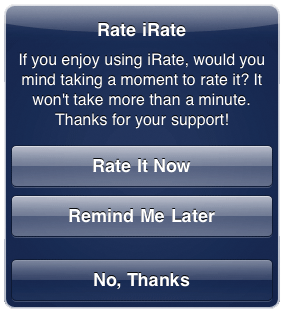The Unity Asset Store Rocks!
How I Use it to Make Cool Cheap Games
How to use the unity asset store and make cool cheap games!!
Below is the transcript of an interview I did for Yohann over at AppsFresh.com. He asked if I would like to share what I was doing with Unity and I was happy to oblige! You will also find out about my background in this industry and hopefully so other cool tips! Check it out...
----------
unity asset store
Today I have an amazing guest. His name is Simon Crack and he has been in the mobile app industry for quite a while and what’s so special about Simon is that he uses Unity and the Unity Asset Store as his main engine to make games. So I don’t want to get too much into the details right now. So let me introduce you.
Yohann: Hey Simon how are you?
Simon: Hey I am good. How are you?
Yohann: I am doing excellent. Thanks. So can you tell me a little bit about yourself, you know, who you are? How you ended up in the mobile app industry, especially reskinning and anything you think you would like to mention about yourself?
Simon: Ya sure. So I guess it's was about 2.5 - 3 years ago now when I got into the app industry seriously. I made my first app probably about 4 years ago when the App Store really just sort of began. I made a simple app. It was with appmaker an online website where you can just take feeds from websites and make a real simple app. This was my first one. And basically I took my magic website FreeMagicTricks4u.com where there are a ton of magic tricks and turned it into an app.
When I released it, it did ok. But at the time I didn’t know how to monetize it. I was getting around 2,000 downloads a day. But I was making no money. I mean the traffic was coming back to the website but the app was not profitable. So yeh that was the first app I made. And to be honest I kind of put it on the back burner and it wasn’t until a year later I jumped back into the industry because I could see it kinda flaring up.
Yohann: So question. What’s your background in the sense of were you a computer scientist? Were you a programmer before or a graphic designer, or none of the above?
Simon: Graphic designer. Yeah, so I was employed for about 7 - 8 years as a graphic designer. And I was getting to the point in my job where for a small company like we were, the work wasn’t coming in anymore. So everyone kinda got laid off and lost their jobs. I got another another graphic designer job. But I lost that one too a year later for similar reasons. So I was kind of forced out on my own. So I was like ok, let’s try more app stuff that seems to be popular.
I was kind of doing my magic website on the side learning internet marketing and teaching people how to do magic tricks. So I was doing that and I was earning decent money from it before I moved into the app space. So that's my story, I was a graphic designer, magician and now appreneur.
Yohann: Now question. When you say graphic designer, you are one of the few that I've actually got to interview that was a graphic designer before. The majority were either entrepreneurs or programmers from a different background. But something is really interesting to me in that you have amazing skills. In the sense that you can create your own graphics. Were you doing graphics for video games before, or is it something you are doing right now or have you never done your graphics yourself?
Simon: I still do most of the graphics myself. It comes from when I was working in a company as a designer. We were doing all sorts of packaging design, leaflets, and websites. So I learned on the job back then and kind of took those skills and transferred it into making apps. It’s the same sort of work. It needs to be good, you know, good design, needs to be eye popping and needs to catch attention.
I still like doing the graphic side of my apps. I do outsource some of the graphics. A lot of the time I still got that kind of thing where I take an icon someone else might have done and I tweak it a little bit. I will change something in the background and make something else pop out you know you I've always got that sort of an input.
And I think it can be both a good or bad thing. Because it can take up my time where I could be doing something else in the business. But at the end of the day, if I take an icon and tweak it a little bit it can give me that edge and extra downloads.
Yohann: Ok definitely. Now question. Since you are a graphics designer are you hard on the quality that you want from your freelance graphic designers?
Simon: Yeah definitely.
Yohann: So, you probably know better than I do that you get all types of quality out there. You get from really low quality to really high designers. But obviously, you have to pay the price when you want to get the higher quality. So can you share with us what’s your technique or what’s your strategy that you use to get good graphics at a decent price and where do you go and how do you do that?
Simon: Yea sure. I mean I use the main industry websites like Odesk, Elance and Freelancer (in that order) to hire talent. My steps are I will publish the job, obviously people then apply and I then look at their portfolios, you can see some of their stuff they have come up with. Some of the time I have looked at their portfolio and I've seen a cool character they have drawn, but it’s never gone anywhere. And I am like "dude that character’s awesome! What’s that for?" And they say like "I just kind of sketched it one day". And I am like, "let’s make a game!"
Yohann: Yeah give it to me.
Simon: Yeah. And at the end of the day if you can get a person doing work for you that's excited about the project, that helps a lot. It’s not just a job for them. You know if you get on with the guys you are working with and you are all pumped for the work.
Yohann: Right, I see where you are going with that. It’s not just another job.
Simon: It’s not just "You gotta make me some graphics". You go out get along with the person, get them pumped, make sure you are pumped and you come up with a better product at the end.
Yohann: Absolutely. Definitely and you know many times you can see people whenever they really like the project they don't even discuss the price. They will be fine whatever you give them as long as they really enjoy and are really passionate about it. Absolutely.
Simon: That’s it. And that’s exactly how you can then pay a fair price for something. Because they are not just in for the money they are in for the passion as well. So they tend to not overprice it. You know.
Yohann: So question. How many apps do you have so far?
Simon: I have about 110 apps.
Yohann: Oh alright. So have you worked on everyone of them or did you outsource some of them completely?
Simon: Most apps I have a touch in. You know whether it’s an icon, screen shots you know graphic wise I'm still full on. There are no apps that I've produced that I've just let go. I produced most of them. It’s hard work.
Yohann: It is definitely. Do you mention the number of downloads. You have 110 apps so you must have some pretty nice numbers here, right?
Simon: Yeah not too bad. Just over 2 million downloads.
Yohann: That’s great congratulations.
Simon: It is not 10 million. You know a lot of guys out there I know they are doing hell work more but you know.
Yohann: I know where you are going with that. You also have to look at the people at the bottom. You know there’s plenty of people that would love to hit millions number of downloads, right? So definitely ,I mean you have been here for 2 yrs and a half so it’s about a million downloads a year. So that’s pretty good.
Simon: Yeah that’s what I am thinking. I know I was thinking the other day that’s about a million downloads a year, so will keep pumping and try and double X that the next year.
Yohann: Right. So now before even getting into the apps you made, I want to know about the icons. Because I know you are the one touching the icons. So is there any specific tools you use? Can you just explain to us the process how to make great icons?
Simon: Yeah I mean I use the tool it’s Photoshop. That’s industry standard that I got brought up with you know learning for 7-8 years. So I know Photoshop pretty well.
For me I think to kind of break up that icon down that icon you need to keep it simple. Not too much going on. A lot of icons you see there is too much of stuff going on. If you got character in your game just focus on that character. Don’t make the icon too messy. It’s quite handy for the characters you know, be nice, got some good colors going on. Then just mute the background. You know so that there is contrast between the background and the foreground. So that it jump out more.
Unity Asset Store

Yohann: Ok.
Simon: I think it’s hard to sort of break it down. But generally, you know nice borders well if you can have a nice red border.
Yohann: Oh so you do put borders around. Ok. Good to hear. Do you put like 3D borders or 2D borders or have you tried all of them? Do you have any preference?
Simon: Yeah I have tried all of them. I sometimes I like to give them a little bit. Sometimes you can add too much to a border and it darkens the color. So I try to keep it simple nice red white border and may be a background yellow which contrasts with the red.
So that’s sort of about different sorts of color and stuff. But you train yourself. When you look through your icons there are certain icons that jump out.
Yohann: That’s right absolutely.
Definitely. I have been told and I have been told and I have been using usually the red and the green color as the two main colors when it comes to icons. Those are the ones that drive your attention the most. But absolutely, contrast is very important as well. Absolutely.
Simon: Yeah definitely.
Testicos are pretty much I am sure you know anyway, they could do it without taking it for iOS7 icons, but I use it daily, you know, you can upload an icon and it shows it on the screen.
Yohann: Testico right, and it shows you how it looks around other home devices.
Simon: Home device, different backgrounds, yeah.
And you know the best thing is to obviously get in your route tuck in your device and send yourself the link or actually look at it on iPhone on the ipad, rather than on the screen because it can change, because obviously you know onscreen it looks brilliant it’s so massive. But when you actually get it down to a small icon on your iPhone, you know.
Yohann: Absolutely.
Simon: Make sure it still pops.
Yohann: Yeah for sure. So now let’s talk about your apps. Which one of your apps had the most success in the App Store?
Simon: Well going back to like I said, the 1st app prior was the magic so came away was about a year later revisited and I paid a Chinese developer and it was at the end $2,600 for an app.
I thought this was, you know, be brilliant, it will be amazing and it will be downloaded tons on time, spent ton of money, released it and it made no money at all. So I was like, right… So this plan doesn’t work .
So the next app, I spent 100 dollars on it. I had to get the other end of the sky, obviously, that plan didn’t work so you know need a new plan so I spent $100 and just put it out there and that app went on to make $15,000 today.
Yohann: Wow. So ya that’s incredible.
Simon: I knew that plan was you know, that was the plan make out for low cost and at the end of the day you had not got that much to get back before you are into profit.
Unity Asset Store
Yohann: That’s right. And you bring up a good point. In the sense that anyone from the game industry any gaming industry, you think that you have to spend a lot of time to make a AAA game or an amazing time an you think that you’re gonna invest so much time and money and effort in an app. You think they would do great.
As a matter of fact, it’s completely untrue, it’s completely false for the mobile app industry. It’s the actual opposite. People don’t really want to play AAA games there. People want to play small games that don’t need much brain power. In the sense that, you just take the app. You don’t even know what to do. But as long as you press the screen you will understand right away what you have to do.
And you know they might end up playing this being in a line for either a coffee shop or waiting for friend or being in the train or in the bus or something like that. You know, couple of minutes here and there. So it’s very, it doesn’t require the attention that you need to put in AAA game like gears of war or final fantasy where you really need to work on your character and things like that. Absolutely.
Simon: Ya definitely.
Yohann: So yeah, going back to the fact that you only spent a couple of $100′s of dollars and you made $15,000 out of this compared to the other one the other app where you spent $2,600 and you pretty much made no money out of this.
Simon: Right yeah.
Yohann: So keep the cost as low as possible and keep iterating and producing more and more, right?
Simon: Yeah at least in the beginning. If you are just starting out I would say spend hardly any money making your 1st app, you know. There is no point. I see so many people that email me everyday and they are like I want to do this app and my budget is $2,000 and I am like make 20-30 apps for that $2,000 and you know don’t spend all the money on one idea that could fail. You know, you spend that money on 20 ideas and then you find the ones that work.
Yohann: You are right. It’s pretty much it’s called the spaghetti theory. So you know you just take a bunch of apps like spaghettis and throw them on the wall and the one that sticks is the one that you focus on.
Simon: Right exactly and then once you know what theme or what kind of you know app is working, you can then like you said build upon it. But item #2 spend on the 1st one but still with the same theme or flavor and there you go.
Unity Asset Store
Unity Asset Store
Yohann: Absolutely yup, that’s definitely the strategy that worked and I have seen many people using that strategy and that’s definitely a way to get in the mobile app reskinning industry and then if you want moving away from reskinning industry and creating your own creative games you know we have original concepts. Absolutely.
Simon: Exactly. Yeah you know, when the revenue starts coming in then
you can afford to you know like use the money for other projects. There
may be a technique for failing you know and you are not spending all
your money that you have gotten something you are just taking a little
bit.
It pays off then brilliant, if it doesn’t it’s still the revenue coming through a ton of apps.
Yohann: Yeah definitely. So now, question about the source codes for your games. Now I know you do a lot of Unity games. So do you actually do your own source codes or you buy source codes?
Simon: Just pretty much buy stuff. I kind of… I saw that with game developers like Tray Smith you know, with project 0 type. Have you seen the game they released?
Yohann: I have seen project 0 and project mayhem right. Those 2 platforms to make apps.
Simon: Yeah seriously I could see the potential in the beginning and now it’s kinda saturated. You know like it’s a lot of people doing the same thing as far as the markets saturated. But you know, in the beginning I did some apps using that software and they make quite some decent amount of revenue. I have used project 0 project mayhem and I think like I said it’s probably the bulk it’s getting saturated for those type of games. So now kind of let’s move to Unity and that’s why I am doing a little bit of Unity stuff. Getting back to your question, the Unity asset store.
Yohann: Right so that’s where you get your stuff from now? Ok
Simon: Right.
Yohann: And, now I have seen the Unity access store, I have used it myself and again what’s great about, could you explain to people what’s the asset store and what’s so great about Unity and asset store compared to any other engine?
Simon: Yeah sure. I mean it’s pretty similar to any engine really I
guess. It’s not that much different. It’s a different language, you need
different programmers that you know, don’t necessarily don’t work with
Xcode. But you don’t really have to spend any more money. So a graphic
design, so what I feel like something like the Unity type of games have
perceived high quality you know where you can do 3D stuff. It’s not all
about 3D stuff, 2D games can do just as well.
But you want to you know have a slightly higher perceived quality, I
kind of feel like Unity stuff you know, 3D is definitely appealing. So
that’s kind if where I sort of moved to. And you can buy assets on the
store for super super cheap. Really cool 3D models you can use in any
games.
So that’s kind of where I was before you know, I was hiring a designer
to do some graphics and then I would get code and to do some code and
buying some graphics, some assets and getting a Unity guy to throw them
together.
Unity Asset Store
Yohann: I See… Now, once you have those graphics and you have the game ready, how do you publish it? Do you do it yourself or have a programmer do it for you?
Simon: I do the main you know, setting up the app. Sometimes I would send the certificates to a designer if I’m busy, I would get them into set the backend up. You know I think it’s still good to know all the ins and outs the backend and to do the hard work all by yourself. But not necessarily do yourself every single time. You know it’s cool to just go and ask can you do that for me. And he is like yes. And you are like brilliant.
Yohann: Right. In order to tell them what to do, you have to understand yourself what they need to be doing, right? So the more you know about the domain, the best it is for yourself. Absolutely!
Simon: Definitely.
Yohann: Now how do you learn? I am sorry.
Simon: The guy just quickly just sort of give a good tip in order to
help me, get a good guy code a job, I would literally throw loads of
jobs on the elance, odesk everyday and then just you know, you wait for
all the guys to come back and you sit throw them and a couple of them
you think are good, you contact and give them same tool job. Here is a
Unity asset and here is another one throw them together and you know, I
want to see in a couple of days and I usually give it to 2, 3 or 4
people may be for a couple of $100. And if the person comes back and
they have done a good job and not contested, may be they get that
project in making into a game.
If they, you know, rubbish, come back all up to and couldn’t do it or
this that and all that and you know they are not so good at it.
Yohann: So let me try to rephrase how you’re doing this. Technically, this is a way for you to filter the good workers from the so so ones. So you basically give them a few specific tasks to do in Unity and if you see that they do it in a timely manner and it’s kind of good, you will give them a bigger project may be like reskinning a whole game. Is that what they are doing?
Simon: Yeah I mean the project that I give them initially will be a game but it will be a simple one.
Yohann: Ok so you start with a simple one.
Simon: They are still doing something and it will be helpful. Sometimes I give 2 guys the same job and whoever gets back first gets it and whoever doesn’t, you know, not really but perhaps for me that’s kind of how I separate the good from the bad and you know if someone’s gonna do a good job for me and they would get back quick and that would be it and we will be good to go.
Yohann: In order to do that it seems like you don’t give any
milestone money wise right? You don’t give any percentage right upfront
do you?
Sometimes. Most of the times no. I mean if I see some one that looks
super-duper good and if he really wants or she, then I will pay a little
bit down. But it will literally be $50-$100 and most people if they are
good enough, they will do the initial test for free.
Yohann: So now let’s talk about the latest game that you made. How is it called? And what is it about?
Simon: It’s a crazy game. Well it’s a monster it’s called manic
monster and it’s basically a 3D runner kind if like temple run. Idea is
kind of like pokemon where you have to unlock all the monsters. So, when
you start a game, the main screen is just one monster and the rest and
still at rest. So idea of the game is like you gotta have to save the
other monsters and unlock them.
So you know, the idea for retention is you gotta unlock all the guys.
You gotta unlock one to see who the next one is. So that’s the
idea/theory behind it. And all the assets were purchased from the Unity
asset store.
Yohann: Alright, so you didn’t even do them yourself?
Simon: I did the graphics but I only the graphics you know the Unity guys have made I just made it look nice in screen shows.
Yohann: I have actually seen your icon in the game screen shot and it’s very high quality. Those characters look very vibrant, the colors are very vibrant and they have a lot of off character and personality. So that’s definitely a big plus.
Simon: Just got have a good character. There’s a lot of good stuff on the unity store and there’s lot of bad store. So if you look like an asset, does it pop? is it cool? or does it look good or like rubbish? I have done myself you know.
Yohann: Now do you have any advice to find good assets quickly? Do you know any special way that you used to filter the good from the ugly?
Simon: Obviously the 1st isvisual. You can look at stuff and if it
looks a bit rubbish then you are like may be no. If it looks cool then
you go in for the listing have a read about it.
Usually there is a link to the developer’s website and lot of the time
there is review underneath. So a bit like the app store. There will be
reviews where some people would say this is an awesome asset you know
it’s brilliant and you get to developers pool and that sounds good, and
other times it will be I purchased this asset and it was buggy or you
know the review definitely help and obviously visually if there is
contact details on the website of the guys who made the asset.
Yohann: Well alright thanks for the tip.
Now let’s talk about the source code that you used for this game. Is
that something you bought and then you modified? Is that something you
bought and just used it the way it is? Or is that something you guys
created in house?
Simon: Well for this game?
Yohann: Right the surfer clone.
Simon: For the monster game ya?
Yohann: Right yeah.
It’s split from a couple of assets the actual engine the runner engine
is freely available on the asset store. I can’t remember the line
exactly but there is like a kind of a vampire dude as the guy in the
game, so basically I took that and I pulled some of the characters that I
felt were a bit more charismatic. And then I got the Unity guy just to
swap in the monsters for the vampire dude and we added stuff. We added
like UI to it and definitely we added ads and things like that which
when you brought stuff from Unity access store it’s not marketed.
You know, it’s not setup for ads and things like that. But it’s good
rule stuff that chunked together then add screens for a store you know,
for buying upgrades and things like that. Basically we take the source
codes, put them together and then we do modify them.
Yohann: Ok, it’s technically source codes but it doesn’t have any ways to monetize them or to make them appealing to publish actually a game that would bring revenues right?
Simon: Generally no. Sometimes you find a developer who is more you know revenue inclined, bit more of an entrepreneur. So he might have added some app networks into the games, but generally speaking it’s the bulk standard but it’s the same as you know you always gotta look back at previous apps or other apps you have purchased and think alright we will put an ad in there or we will put screen in there for the store, and just you know you are like close you know things like that.
Yohann: Alright. So if you just happen to remember what’s the name of
that runner that you got for free let us know so that I put it in the
show notes, alright?
Because I am sure the people would definitely enjoy it.
Simon:I don’t think it was free but it was super cheap. I mean the assets we took and a few some of them 10-20-30 dollars for really awesome stuff you are talking about $100, so it’s still not super super expensive really for the assets you are purchasing. Using the Unity Asset Store.
Yohann: Alright alright.
Now, are there any resources you would recommend online to learn more and that helped you on the way to be where you are right now?
Simon: Yes, I mean going back, the first sort of app that I build, kind of, I read Chad Mureta App Empire you must know the industry. I read this book.
Yohann: Ok the app empire?
Simon: The app empire book. And there’s codes as well on the back of it but before just read the book and the book says everything you need to know really.
Yohann: Many of the past people I have interviewed also all basically saying that this is the book to read. This is kind of like the bible of the mobile app industry. Even though I heard that by now the stuff is a little bit obsolete, but the spirit behind is still the same mechanics.
Simon: Yeah and I would say it probably is out of date that you know, if I went back to read that now it probably wouldn’t be quite up-to-date. But like as you said it is the spirit behind it and it’s the story and it kind of that’s where it came from. On the back of that like I say, Carter Thomas his blog is awesome, everyone probably knows about that.
Yohann: Blue cloud solutions.
Simon: Yeah blue cloud solutions. I am trying to think Jane, Chocolatelab apps and there is loads of guys out there trying to tell people how to do stuff and that’s kind of new thing. I have started a website but there is not much on it at the minute but it’s kind of like I am trying to give it back to the community. It’s kind of, I don’t know, annotate what I have been doing so that other people can replicate. It’s a new website.
Yohann: Ok what’s the address?
Simon: It’s appgremlin.com
Yohann: app gremlin alright.
Simon: Ya. So it’s a new website like I said there is not many pages on there at the minute but it’s kind of kind of want to go with documenting everything, get it written down, so that’s kind of like a course there or you know some help for other people.
Yohann: I am sure you are going to go through loops and hoops and somebody on the way can avoid them. They can avoid blockers and impediments by reading what you had to go through. Definitely.
Simon: Ya definitely.
Yohann: Alright, thanks for the info and how can we keep in touch with you?
Simon: appgremlin.com, there is a contact page I think. If there isn’t I will put one. Either that or simon@appgremlin.com and I will pick up your email address.
Well Simon, thank you for everything. That’s a lot of knowledge that you came today and shared with the whole community. And I wish you even more success in the App Store and I want you to comeback and reach that 10 million downloads number.
Simon: Definitely.
Yohann: Alright. Good luck my friend.
Simon: Thank you very much.
Yohann: My pleasure keep in touch.
Simon: Thank you very much. Cheers brilliant. Keep in touch. Bye
Yohann: Thanks for listening to the mobile app flipping broadcast. If you find this broadcast interesting please subscribe on itunes and leave us a review and sharing is caring so spread the world. You can also follow me on twitter at Yohann305. That’s Yohann305. Also come to appfresh.us You will find all the episodes, show notes and resources to make you more productive. See you at the next episode. Unity Asset Store rocks






New! FaceBook Comments
Have your say about what you just read! Leave me a comment in the box below...